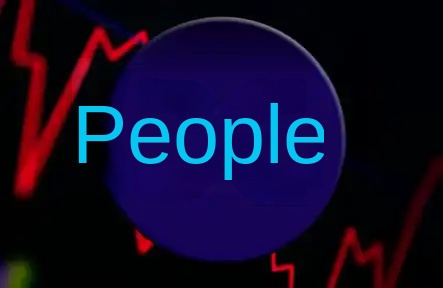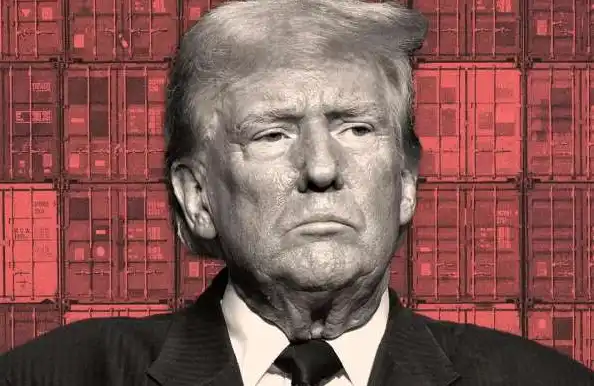LayerZero airdrop causes another stir. Is the existing token distribution model going to be eliminated?
The witch cleansing activity that lasted for more than a month has finally ended. The LayerZero Foundation announced today on X that it has launched an airdrop qualification query page, but the result can still be described as "stingy".
As one of the most anticipated potential airdrop projects in the community, LayerZero's airdrop was expected to be "big and coming", but as the witch cleansing activity progressed, a large number of studios and even retail accounts were reported as witch accounts, and the hard work for more than half a year was finally wiped out.
Related reading: "LayerZero is about to issue a coin, and what comes before the airdrop is the largest "witch cleansing activity" in history?"
According to a report previously released by LayerZero, there are 800,000 addresses that are potential witch accounts. So far, Bryan Pellegrino, CEO of LayerZero Labs, said on X that not all witches have been eliminated. On the airdrop claiming day, the witches in the final list (published tomorrow) will be redistributed to those who qualify for the LayerZero Core airdrop.
In the airdrop claiming page posted by the community, some users who are ranked in the top 5% of the qualifications can only receive more than 200 ZRO tokens, which is worth about 600u based on the OTC 3u. And Bryan Pellegrino also said that the airdrop will be received on the mainnet, which means that the already meager airdrop income needs to deduct the gas cost.

Is LayerZero also in trouble with "rat warehouse"?
However, when most users were sarcastic about being counter-rolled, there were still users who said they were eligible for tens of thousands of ZRO, and most of these people held Kanpai Pandas' NFT.
Currently, the token economic distribution rules of ZRO only have the version initially announced by Bryan Pellegrino, that is, the total supply of $ZRO is 1 billion, 23.8% will be airdropped to the community and developers, of which 8.5% of the tokens will be circulated on the first day, 5% will be allocated to official bridge users, 3% will be allocated to RFP projects (ie, ecological users), and 0.5% will be allocated to the community pool. Most of the remaining will be distributed over the next 36 months, with additional retroactive distributions every 12 months.
This means that of the 238 million $ZRO airdrops, 20.23 million were in circulation on the first day of listing. Bryan Pellegrino stated in the community that Stargate ecosystem users received a total of 10 million ZRO airdrops, Pudgy Penguins and Kanpai Pandas each received 1 million airdrops, and all projects in the RFP allocated the airdrops to their respective communities according to their own wishes.

Among them, one address received a total of 5,335.55 ZRO airdrops for holding 50 Kanpai Pandas NFTs, and another address starting with 0x816 received 10,000 ZROs for holding 152 NFTs. On average, one NFT gets about 100 ZROs, and is adjusted according to the rarity of the NFT itself.
Since Kanpai Pandas is not a very well-known project, it has also aroused suspicion of "rat warehouse". However, according to nftgo data, there is no obvious correlation between the high point of Kanpai Pandas' trading volume and the time of LayerZero's airdrop snapshot, and its official push has been operating well. Therefore, Kanpai Pandas' "rat warehouse" is questionable.
Related reading: "Is Kanpai Pandas, which received the LayerZero airdrop, a "rat warehouse"? "

How should the airdrop tokens be distributed?
Not only ZRO, but also the recent ZK airdrop, because its number of qualified addresses is far less than the predicted value, the resolution rights are not transparent, it was cleared by Nansen, and suspicious addresses frequently appeared, but the official did not directly respond to a series of mysterious operations, and it was also caught in the "rat warehouse" storm. Previously, AltLayer was also hotly discussed by the community for "rat warehouse" because of OG NFT.
Related reading: ZKsync airdrop storm: side door rules raise doubts, and rat warehouse controversy is everywhere
The root cause is that the community is dissatisfied with the airdrop allocation ratio. Retail investors have no way of knowing how to make their accounts meet the official airdrop standards, and the official "final right of interpretation" will only make it seem that they are behind the scenes, which will eventually result in the airdrop being allocated to rats, and rats selling coins to retail investors to take over, and the remaining supply of tokens is still being unlocked and continued to smash the market.
In contrast, the official said that as long as you have used Uniswap, regardless of whether you have successfully exchanged or not, everyone can receive 400 UNI airdrops. At the same time, holding UNI also has a series of benefits such as SOCKS tokens.
Although this kind of airdrop without any threshold has also been criticized, in today's era of large-scale anti-takeover and takeover, it seems that UNI has become a truly successful airdrop case.
After studying a series of controversial airdrop cases including Optimism, Starknet, EigenLayer, crypto researcher Kerman Kohli put forward insights. He believes that whales should not get all the tokens just because they have invested a lot of capital, but at the same time the smallest users should get some basic number of tokens anyway.
But these two goals are in direct conflict. At present, it seems that the best approach for industry standards is to implement a tiered system, with slightly less linear allocations for "large" users (more liquidity, more tokens); linear allocations for "medium" users; and fixed allocations for "small" users. At the same time, some rough criteria are used to implement this grading system
Related reading: "Understanding the airdrop mechanism: How to design a satisfactory airdrop? "
Will the ZRO airdrop be the end of the Mao Party?
From the perspective of ZRO, many studios have been frustrated by the "largest-scale" witch cleansing campaign it launched. Although the project has a good reason to airdrop tokens to real users rather than studios that sell them en masse as soon as they go online. But it is really chilling that the studio has been abandoned after paying real money to help the project improve data and test performance.
As for the strong dissatisfaction caused by ZRO, c00k1e (@lonelyhorseme) said that the real reason is that these airdrop project parties are breaking the balance between VC, project parties and "fleecing" users.
"Fleecing" users, or studios, are the weakest party in this deformed game caused by VC's irresponsible high valuations and crazy money-spending. Project parties need users' interactive data to get money from VCs, and VCs need project parties to issue tokens to cash out. Each project party is clearly holding tokens as carrots in front of "fleecing" users, using the air that will become tokens in the future to make users work for their data growth for free.
VC's own greed or investment misjudgment has led to these projects having super-high valuations. The projects cannot form a reliable and stable business model, so they have to rely on issuing tokens to let retail investors pay for their indigestible excrement.
This abnormal pattern of retail investors working hard but being abandoned in the end may eventually be eliminated.
Welcome to join the official BlockBeats community:
Telegram Subscription Group: https://t.me/theblockbeats
Telegram Discussion Group: https://t.me/BlockBeats_App
Official Twitter Account: https://twitter.com/BlockBeatsAsia
 Forum
Forum OPRR
OPRR Finance
Finance
 Specials
Specials
 On-chain Eco
On-chain Eco
 Entry
Entry
 Podcasts
Podcasts
 Data
Data


 Summarized by AI
Summarized by AI







